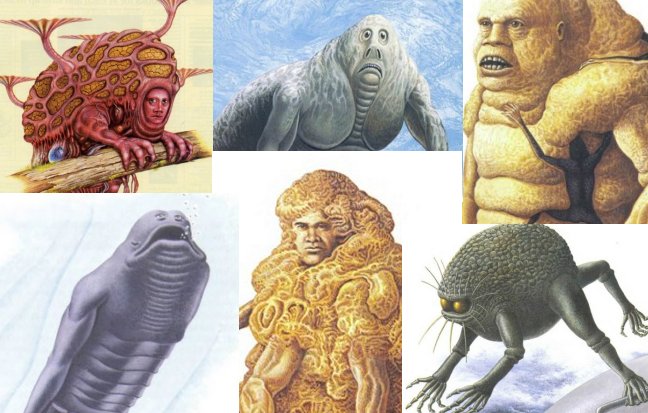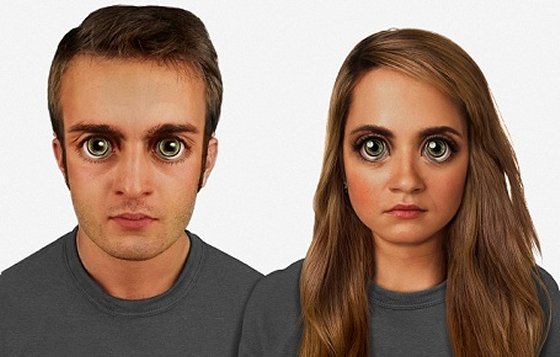MessageToEagle.com – Scientists keep speculating what humans will look like in the distant future. If we will survive as a species our physiology will change. The question is – “what will we look like?”
Will we be attractive, ugly or perhaps resemble some animals?
In his book, Man after Man – An Anthropology of the Future, zoologist Douglas Dixon, offers a scientific speculation what humans will look like after 50-million years of evolution.
Dixon presents a number of strange human appearances. His theory is based on the use of genetic engineering and space travel.

In his book, we encounter the aquamorphs and aquatics who are marine humans, otter-like fishing humans, Slothman sloth-like humans, Spiketeeth, saber-toothed predatory humans, parasitic humans and many more remarkable types of humans.
Predicting what humans will look like in the future is fascinating and has been the domain of science fiction writers for centuries.
Dr. Alan Kwan who has a PhD in computational genomics from Washington University believes that humans will have larger brains and eyes.
“As our understanding of the universe increases, I predict that the human head will trend larger to accommodate a larger brain.

But instead of some orthogonal evolutionary path that ends up with the 210th century human a la Futurama’s Morbo the anchor-alien, the rule of viable human biology will still apply and so the entire head will trend larger, though with a bias for a greater cranium growth than facial growth; the human 20,000 years from now would look to us like someone today except we would notice the forehead is subtly too large,” says Dr. Kwan.
Another possibility is that humans will become more bird-like and grow beaks.
According to Dr Gareth Fraser, of Sheffield University a beak would be “more robust and practical” than teeth and would not rot, chip or fall out.
Dr. Fraser, who has explored why humans grow only two sets of teeth in their lifetimes, while some other creatures grow many more, said that “it could be possible for humans to evolve to grow beaks, like pufferfish, which may be more robust and practical.”
Dr. Fraser has pinpointed the cells responsible for the growth of new teeth in other animals and believes scientists could eventually stimulate similar cells in the human mouth to create more sets of teeth.
“I guess people will be looking at whether you can make perfect teeth. But there will always be orthodontists employed because even when you have new teeth, there is going to be a need for positioning.
With our extended lives and modern diets, the limited supply of human teeth is really no longer fit for purpose.
Our research is focused on looking for ways in which we can replicate the way that fish create an endless supply of teeth and bring this capability to humans,” Dr. Fraser explained.
It should be added such drastic evolution change would not take place any time soon. If it happens at all, the change could gradually become visible in millions of years from now.
MessageToEagle.com






